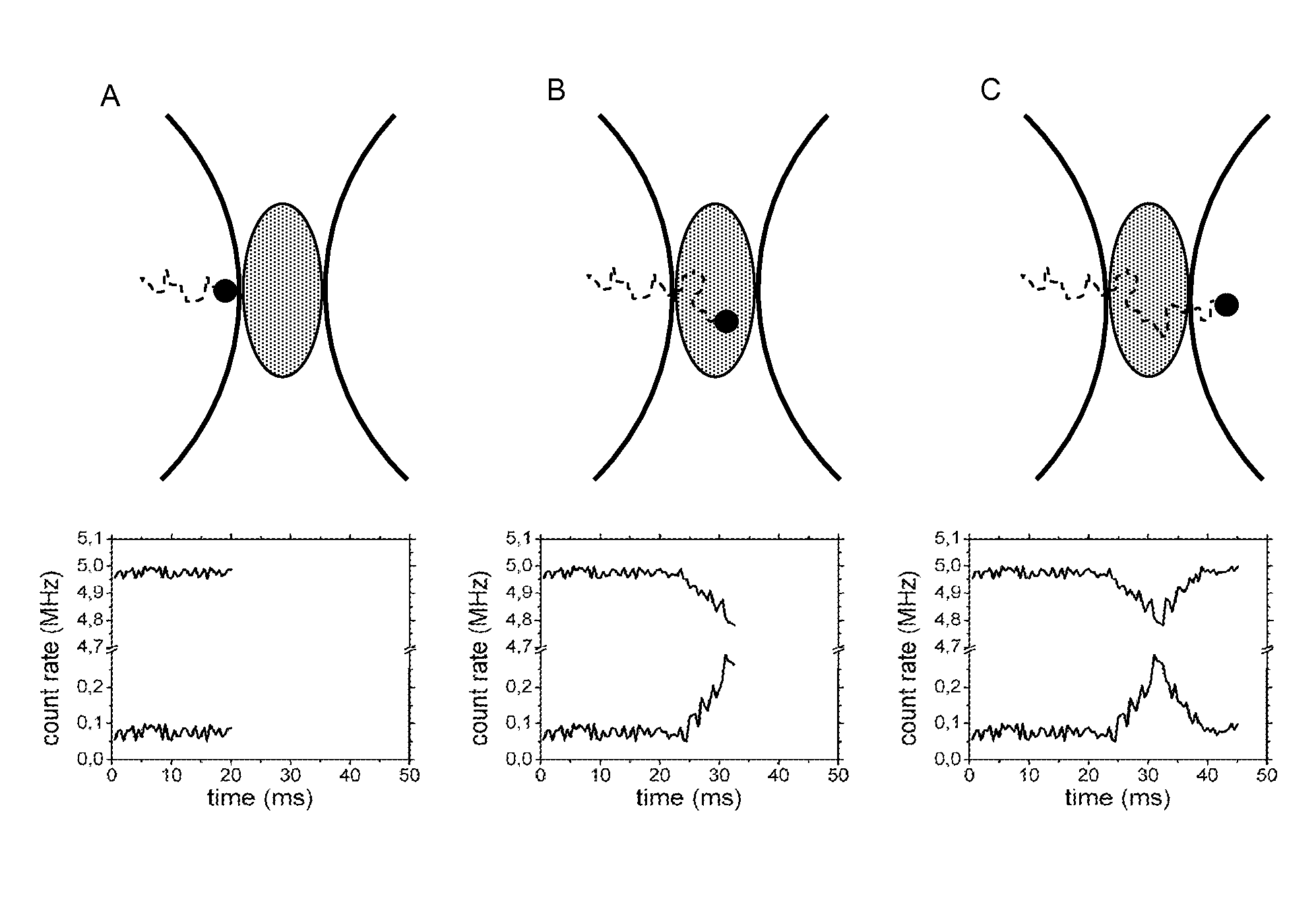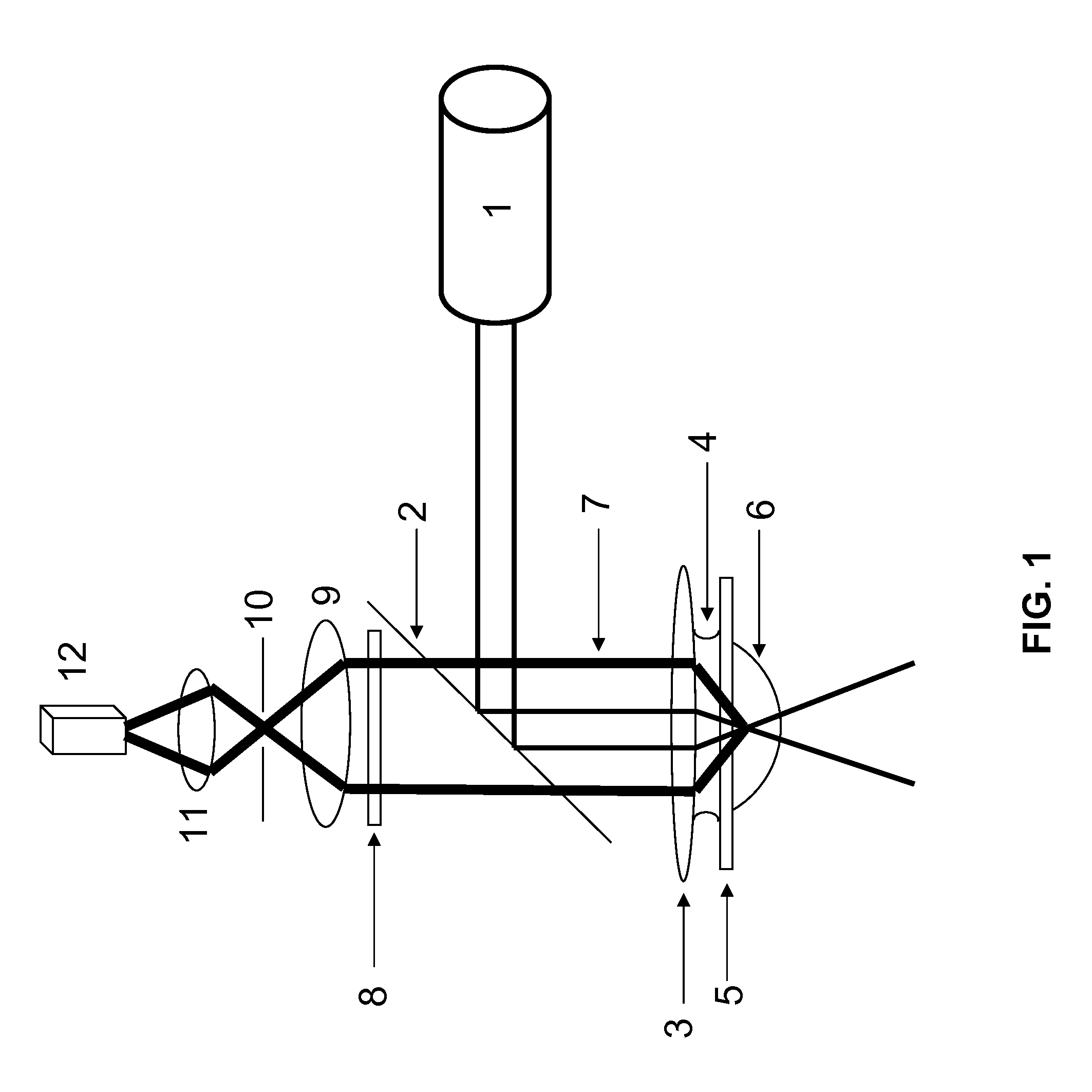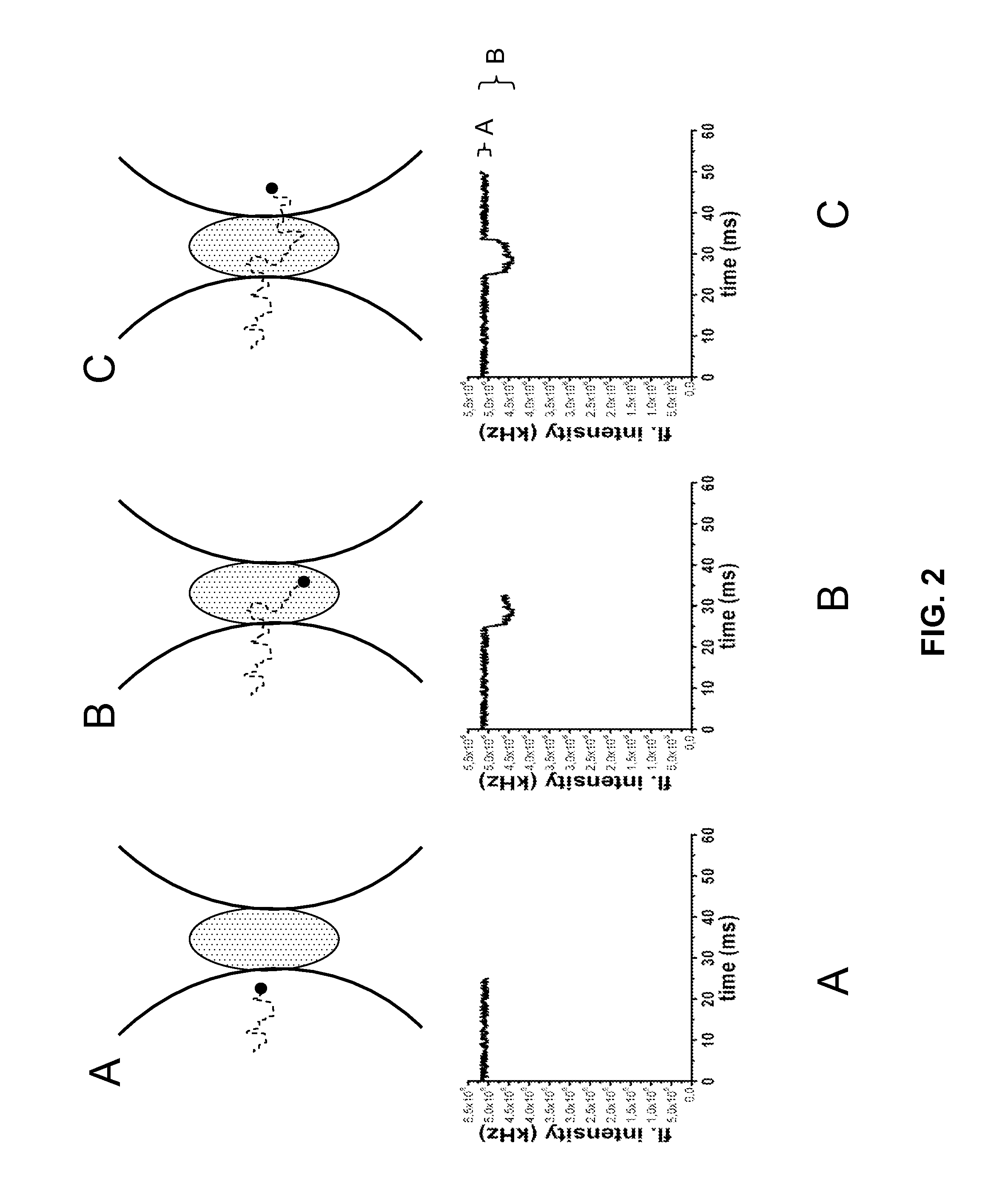Inverse-fluorescence correlation spectroscopy
a technology of inverse fluorescence and correlation spectroscopy, which is applied in the field of inverse fluorescence correlation spectroscopy, can solve the problem of the necessity of labeling biomolecules with small fluorescent markers, and achieve the effect of high brightness
- Summary
- Abstract
- Description
- Claims
- Application Information
AI Technical Summary
Benefits of technology
Problems solved by technology
Method used
Image
Examples
exemplary embodiment 1
A Fluorescence Correlation Spectroscopy System of the Present Disclosure
[0207]Generally, if proteins or other biomolecules are analyzed by iFCS or iFCCS, zero-mode waveguides (ZMWs) can be used in combination with a standard FCS-microscope. The detection volumes in ZMWs are 1000-10 000 times smaller than diffraction-limited detection volumes, which allows proteins and similar sized biomolecules to generate negative spikes of magnitude larger than the noise in the medium-signal. If the FCS-microscope in addition is equipped with alternative photo-detectors that are capable of detecting considerably higher count rates than what APDs are capable of, for example PMTs in DC-mode or photo-diodes, which both give a current as output, then the relative photon-noise in the signal from the medium can be significantly reduced. This in turn allows even smaller proteins and biomolecules to be detected.
exemplary embodiment 2
Analyzing the Concentration of and Size of Unlabeled Proteins by iFCS
[0208]Using iFCS, protein molecules can be analyzed without being fluorescently labeled. iFCS gives an estimate of the concentration and diffusion coefficient of the proteins. The size-estimate of particles / proteins possible from iFCS is the same as in standard FCS in that the size is estimated from the diffusion coefficient. This is in contrast to iFCCS, which allows a direct estimate of the volume of particles / proteins. However, by using FIDA / PCH (Chen et al., 1999; Kask et al., 1999) as described above, the volume of particles / proteins can be estimated in iFCS, i.e. also for unlabeled particles / proteins.
[0209]An experiment can be carried out as follows:
[0210]The protein-sample is dissolved in the signal-generating medium (for example 1 mM alexa 488 carboxylic acid dissolved in a buffer of pH 8.5), and analyzed in the detection volume created by the ZMW on the iFCS-microscope. The automatically generated autocorr...
exemplary embodiment 3
Analyzing the Binding of a Labeled Protein to an Unlabeled Protein by iFCCS
[0212]In standard FCS, the binding of a labeled biomolecule to an unlabeled one can be detected only if the resulting complex has a diffusion time at least 1.6 times longer than the unbound labeled protein (Meseth et al., 1999). For spherical molecules, this corresponds to a volume at least ˜4 times that of the unbound labeled protein. iFCCS is more sensitive and should allow identification of complexes whose size differs less from that of unbound labeled proteins; with the ability to identify complexes with a volume 1.6 times larger than that of unbound labeled proteins, complexes can be 2.5 times smaller than the resolution-limit in standard FCS and still be identified by iFCCS
[0213]An experiment can be carried out as follows:
[0214]Fluorescently labeled protein-molecules, e.g. a labeled antibody (protein A), is mixed with another, unlabeled protein (protein B), whose volume can be smaller or larger than tha...
PUM
 Login to View More
Login to View More Abstract
Description
Claims
Application Information
 Login to View More
Login to View More - R&D
- Intellectual Property
- Life Sciences
- Materials
- Tech Scout
- Unparalleled Data Quality
- Higher Quality Content
- 60% Fewer Hallucinations
Browse by: Latest US Patents, China's latest patents, Technical Efficacy Thesaurus, Application Domain, Technology Topic, Popular Technical Reports.
© 2025 PatSnap. All rights reserved.Legal|Privacy policy|Modern Slavery Act Transparency Statement|Sitemap|About US| Contact US: help@patsnap.com



